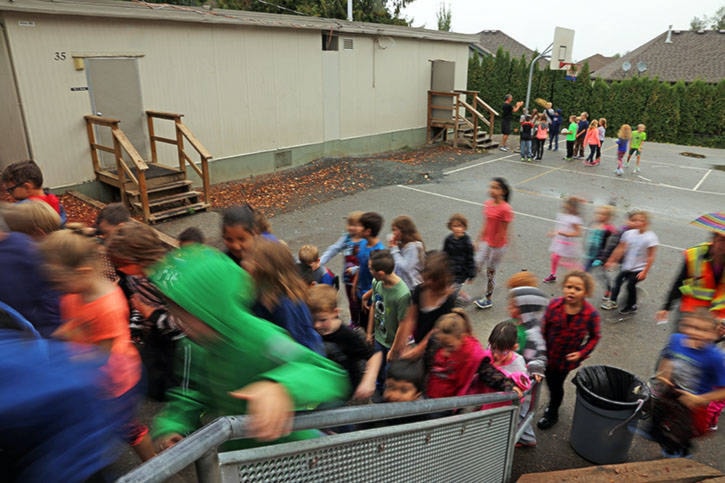It’s time for schools to break the “egg carton” model of school planning, and get back to creative, shared spaces that can shift to fit changing classroom needs.
That was the premise of a recent study of the Chilliwack School District’s Long Range Facilities Plan. The study was spearheaded by Steve Kutno, from PCG Education, and he was back in front of the Chilliwack school board on May 23 to present his findings. The long range planning is a requirement of the Ministry of Education (MoEd), and ties into the district’s five year capital plan.
“School districts need to think outside of the egg carton model,” he said. “Schools need flexibility of spaces to allow for different kinds of instruction.”
He and a team visited all of Chilliwack’s school sites, which comprises 19 elementary schools, four middle schools, two high schools, one middle/high school and two alternate education schools. Kutno explained that the MoEd looks to these long range and capital plans on a provincial level, and rate the needs of all 61 school districts and rank them in need of expansions, enhancements, replacements and entirely new buildings.
The new curriculum is going to drive schools to create more flex spaces, as students are encouraged to be “generating rather than consuming” ideas in the classroom, he said. Information gathering has become so quick, that innovation and problem solving are at the core of many lesson plans, Kutno added. Many teachers in the Chilliwack school district have already embraced teaching tools like Makerspace, which gets students out from behind a desk and actively problem solving.
That could further be supported with more flexible furniture, but also with the way new schools are being built, he said. He noted pod planning, which is how at least one school, Mt. Slesse middle, was planned when it was built. Over the years, the pod structure has lost its function, and it would behoove school administrators to engage with teachers on how to bring that model back to life, he added.
Adopting new teaching models, strategies and spaces is only limited by “how current staff wants to imagine instruction,” he said.
Kutno stressed that Chilliwack is beyond the point of relief when it comes to relieving overcrowding.
“Even a new building won’t alleviate the crowded schools,” he says. “The Province couldn’t provide enough funding to build the buildings you need, and bring that relief. And you still need an abundant number of portables.”
Every single district in the province is looking for more portables, Kutno added. And they only solve one problem, while creating others.
“Portables don’t create extra shared spaces, and they create strain on bathrooms,” he said, along with computer use, office space, library and gym time.
Student safety is also at risk with the addition of every portable, he noted. Because portables don’t have washrooms, students are often moving between them and the main building.
“There are moments in time when nobody has eyes on them,” he says.
So, the school district is running a pilot project at several elementary schools in the fall, installing electronic door locks with programmable key cards. They can be programmed to only open doors during school hours, would be handed out on a case-by-case basis like a hall pass, and could be deprogrammed easily if lost. But Kutno also suggested exterior cameras for increased student safety.
At the end of the meeting where Kutno spoke, Chilliwack Teachers’ Association president Lee-Anne Clarke brought up some points from his presentation. Kutno visited the school sites outside of teaching hours, and was basing his findings on empty buildings, she says. She also pointed out that many Chilliwack teachers have adopted new teaching strategies, including outdoor classroom time. She urged the board and district staff to speak directly to teachers about what is and isn’t working in the classroom.
